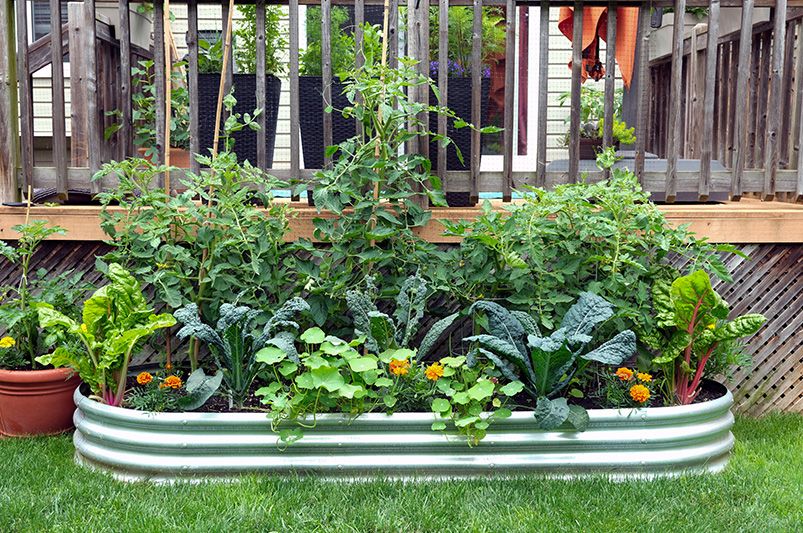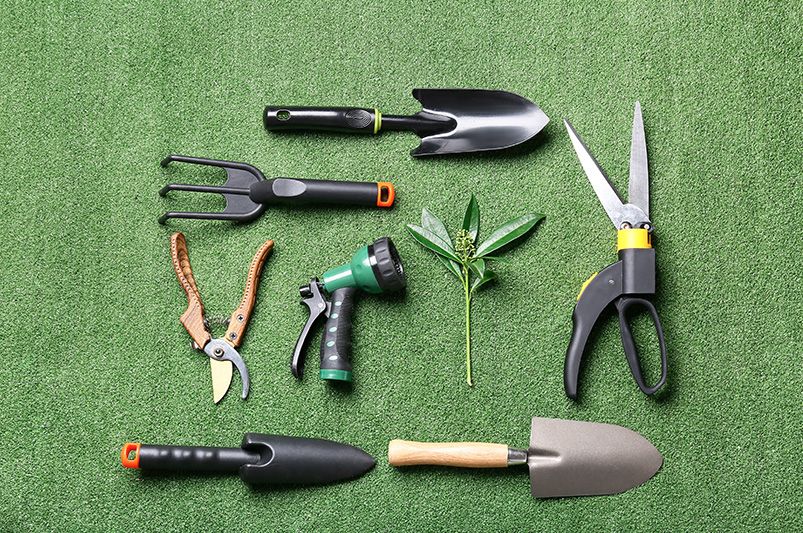
How to Start a Container Garden: Tips for New Gardeners
Published: 16/05/2025 | Updated: 15/05/2025
Key Highlights
-
Container gardening is an excellent way for beginners to start growing plants in small spaces, whether on a balcony, patio, or porch.


-
Selecting the right container, including proper drainage holes, plays a critical role in plant health.
-
Using quality potting mix and natural fertilizer ensures optimal growth and productivity for veggies and herbs.
-
Knowing your plants' sunlight needs, like full sun for certain veggies, is crucial for their thriving growth.
-
Proper tools, maintenance, and care techniques make container gardening a surprisingly simple and rewarding activity.
Introduction
Container gardening is an easy way to grow many plants, even if you have limited space. You can choose to grow flowers or fresh veggies. This method allows you to use different types of containers, such as terra cotta pots or items you can reuse. Using a good potting mix along with drainage holes will help your plants thrive. It's also great for beginners who want to enjoy gardening without needing a large yard. Do you want to start your first container garden? Let's help you with the steps.
Choosing the Right Containers for Your Garden
The type of containers you choose is important for your gardening success. Containers come in different sizes, shapes, and materials. Each of these can affect plant health, root growth, and how easy they are to use. You can use terra cotta, plastic, or even recycled buckets, but it's important that they have good drainage to avoid water problems. For most plants, containers should be at least eight inches deep. This depth gives enough room for the roots to grow.
Also, think about the weight of your containers. If you need to move them often, lightweight plastic or self-watering containers are a better choice. Terra cotta and wooden containers look nice but can be heavier. They may also keep too much or too little moisture. Picking the right container begins with understanding the needs of your plants. After this, we will look at the benefits of different materials and how they can help your container garden thrive.
Benefits of Different Container Materials
Container material affects how much moisture stays in, their weight, and their fit for plants, so it’s important to choose wisely.
Terra cotta pots are a good start. They allow water to evaporate easily and are best for plants that like drier conditions. You may need to water these plants more often because they lose moisture quickly.
Plastic pots, however, keep moisture longer and are light, making them easy to move around. Self-watering plastic containers make it simple to keep your plants hydrated. This can lower your daily tasks, especially in summer. These pots are strong and great for beginners who want an easy gardening experience.
For a traditional but stylish choice, glazed ceramic pots are nice. They hold moisture well and look good. Still, they can be heavy and may crack in cold weather. Keep in mind that no matter which material you pick, good drainage in these containers is vital for a successful garden.

Selecting the Correct Size and Shape
Choosing the right container size is important for your plants. It helps their roots to grow properly. A simple guideline is to use containers measured in gallons. For example, vegetables like tomatoes or cucumbers need at least a five-gallon container to do well.
The depth of your container is important too. For plants with shallow roots, like lettuce and herbs, a container that is eight inches deep works fine. But for root vegetables like carrots, you may need containers that are 12 to 16 inches deep. Do not crowd plants in one container. If they are too close together, their growth can be affected.
When picking a shape, choose wider containers with stable bases. These help prevent top-heavy plants from falling over. It’s also easier to garden with containers that you can move around. Pick shapes that meet your needs, especially if you want to shift them to catch sunlight or stay out of the afternoon heat.
Essential Tools and Supplies for Starting
Starting a container garden can be easy if you have some basic tools and supplies. You need strong containers that have drainage holes, a good potting mix, and natural fertilizers. These are the main things you need to get started. You will also benefit from standard gardening tools like a trowel, a watering can, or a hose. These tools help make the setup easier.
You should think about getting supplies that help with maintenance too. Self-watering containers and proper crocks will help improve drainage. This will make your gardening experience more enjoyable. With all these essentials ready, you are on the path to a beautiful garden.

Basic Gardening Tools List
To do container gardening, you need good tools. These include:
-
Trowel: This is great for digging small holes to plant seedlings or to aerate the soil.
-
Watering can or hose: These help give your plants the right amount of water, especially in summer.
-
Crocks: Use these at the bottom of your containers. They help with drainage by adding broken pottery or stones.
-
Pruners or shears: These tools help keep your plants trimmed. They remove dead foliage and help maintain the shape of the plants.
-
Gloves: Wearing gloves protects your hands from dirt and sharp edges on containers.
Having the right tools makes container gardening easier. With these tools, taking care of your container garden can be fun.
Importance of Quality Soil and Fertilizers
The soil in your container garden is very important for your plants. Unlike regular garden soil, a good potting mix helps with drainage and supports strong roots. Don't use compacted garden soil. It can hold too much moisture and cause root problems.
Compost and natural fertilizers add needed nutrients. Organic compost helps renew nutrients naturally, while slow-release fertilizers provide steady feeding. This keeps your plants healthy and their foliage bright.
Liquid fertilizers, like fish emulsion, are also great, especially when your plants are producing a lot. Keep in mind that container soil loses nutrients quicker than regular garden soil. So, it's important to fertilize often for the best results. Now, let’s go through how to organize your lively container garden step by step.
Step-by-step Guide to Setting Up Your Container Garden
Starting a container garden is easy. First, get your containers ready by adding drainage holes and lining them with crocks. Then, mix good potting soil with compost or a natural fertilizer. This will help create a rich environment for your plants. Place your container in a spot where it can get enough sunlight, either in full sun or partial shade.
After you set up your containers, pick seeds or seedlings for the plants you want. You can choose herbs like oregano or veggies like kale. Just make sure to plant them at the right depth and space them correctly. Water them regularly and add fertilizer during the growing season. This will help your garden stay healthy. Keep reading for more detailed steps.
Step 1: Prepare Your Containers
Preparing your containers is the first step for a good garden. Check that your containers have enough drainage holes to stop water from building up. If they don’t, drill some holes. This will help water flow out easily.
For better drainage, put some crocks, broken terra cotta, or a coffee filter at the bottom. This way, soil won't block the holes. After that, fill your container with a good potting mix. Potting mix is lighter than garden soil. It helps stop fungi and drains water while keeping moisture for the roots.
Make sure to place your containers in a spot where your plants can get the sunlight they need. Now that your containers are ready, it's time for the fun part—planting!

Step 2: Plant Your Seeds or Seedlings
Once your container is ready, it's time to plant seeds or seedlings. For seeds, check the packet for how deep to plant them. Press the soil gently to keep it moist. Water them slowly to prevent moving them around.
If you are using seedlings, plan where to place them so they are not too close. Start by making a small hole in the soil that is deep enough to cover the roots of the seedlings entirely. Press the soil firmly around each seedling to keep them upright and stable.
Finally, water the plants. After you plant them, make sure the soil is moist but not flooded. Keep the moisture steady. This is important for seedlings to grow strong. Now, your container garden is set for growth.
Conclusion
Creating a container garden can be fun and satisfying. It adds beauty and life to your outdoor space. Selecting the right containers, tools, and plants is important for your gardening success. With good planning and attention to detail, you can grow a healthy garden. This garden will not only improve your area but can also give you fresh produce or beautiful flowers. Remember, gardening is a journey with many chances to learn. Feel free to try new things and share your journey with others who love gardening too. If you found these tips useful, think about sharing this post on social media. Inspire new gardeners in your circle!
Frequently Asked Questions
How much sunlight do container gardens typically need?
Most container gardens need full sun. They should get at least six hours of sunlight every day. Still, some foliage plants and shrubs can grow well in partial shade. During the growing season, check your perennials. Make sure they have enough light to grow their best.
What are some easy-to-grow plants for beginner container gardeners?
Beginner-friendly container plants are kale, basil, lettuce, peas, and cucumbers. These veggies and herbs grow fast, need little care, and give great results. Compact types, like bush cucumbers or patio herbs, are ideal if you want to start gardening.
Need assistance with a landscape design that includes a space for a container garden?
ShrubHub’s expert landscape designers can help you create a stunning outdoor space that seamlessly incorporates a container garden—perfect for growing herbs, veggies, or flowers in even the smallest yards. Whether you’re working with a patio, balcony, or a larger yard, we’ll design a layout that maximizes space, enhances aesthetics, and supports healthy plant growth. Let us help you bring style and function together with a container garden design that suits your lifestyle.


